Shrines and temples don’t normally rank very highly on the list of “must visit” places when it comes to Osaka. With the main draws of the prefecture typically being food or as a hub for day trips thanks to its central location and good connections, its diverse list of spiritual sites often gets overlooked.
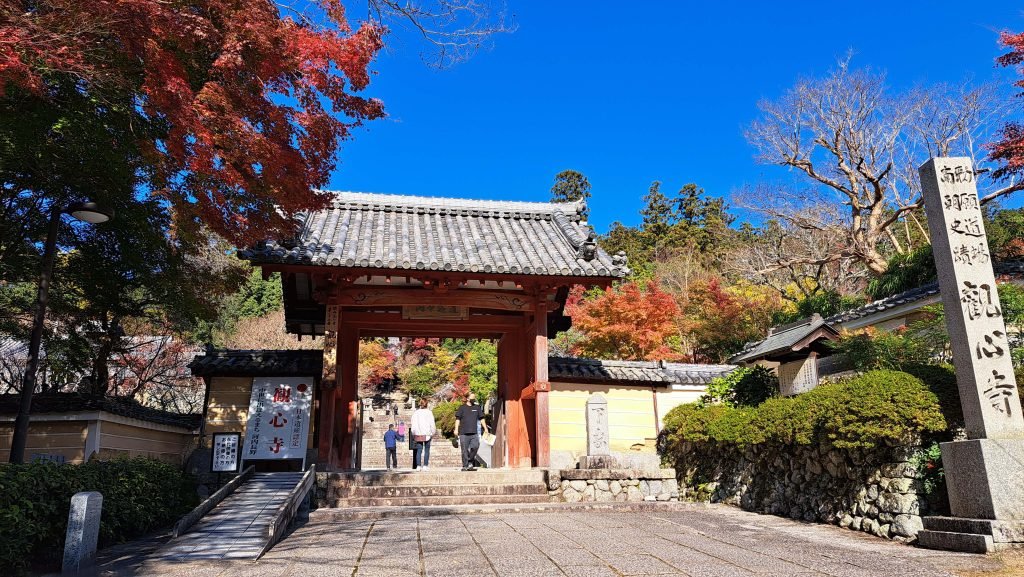
That being said, some locations, like Shitenno-ji temple and Sumiyoishi Taisha Shrine, are fairly well known and see growing numbers of overseas visitors. But many still remain quite obscure. At times, these lesser known temples can be incredibly important and historically significant, rivalling and even surpassing many more well known places in terms of story and beauty.
This is a list of three of my favourite lesser known temples from around Southern and Eastern Osaka Prefecture. Forming part of a historical region called Katsuragi, this edge of Osaka was once home to ancient Imperial palaces and was deeply connected to the establishment of both Buddhism and Shugendo in Japan.
Table of Contents
Kanshin-ji
Kanshin-ji is one of the largest and most important temples in the city of Kawachinagano and its storied history connects it to some of the most influential figures in early medieval Japanese history.
It is thought to have been founded by the semi-legendary monk En-no-Gyoja around the beginning of the 8th century. En-no-Gyoja was extremely active in this area where he founded a number of temples. It was also in the nearby mountain range that he began to lay the foundations of Shugendo, the ascetic mountain worship practiced by Yamabushi.
Some years later, Kukai, another extremely important monk, came to Kanshin-ji to undertake training. Eventually, Kukai would go on to found the Shingon branch of esoteric Buddhism and establish his monastery at Koyasan, one of the most sacred Buddhist locations in Japan. During his time at Kanshin-ji, Kukai would make several renovations. He also made the unusual move of enshrining the constellation Ursa Minor (the Big Dipper) in 7 Hoshi-zuka (star mounds) scattered around the temple grounds.
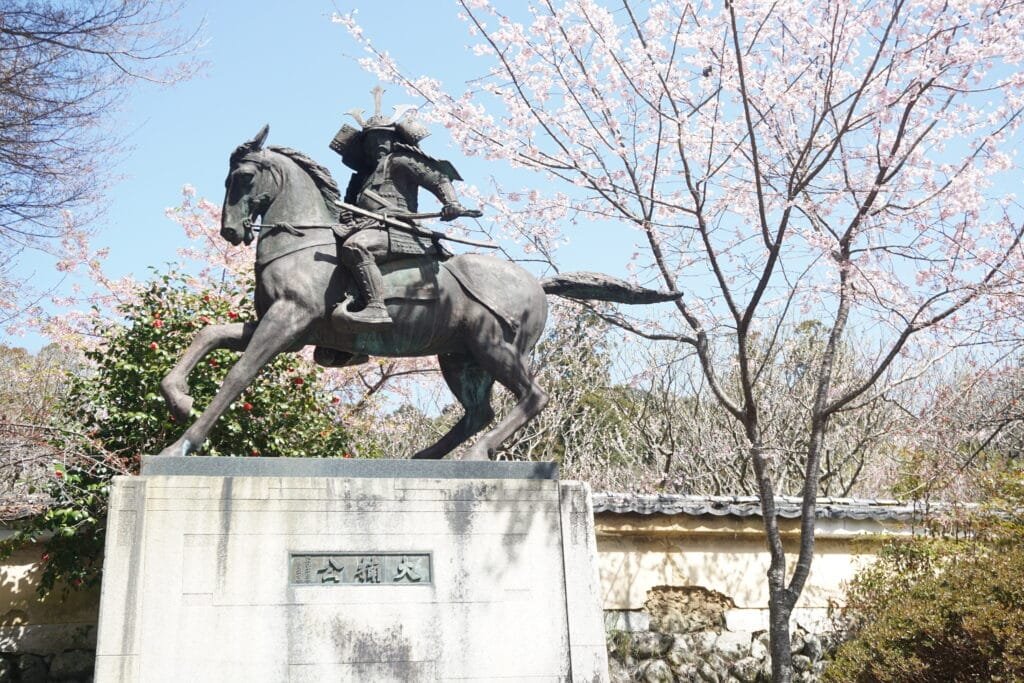
Jump forward another few hundred years and in the 14th century, Kusunoki Masashige, a young man from a local noble family, would receive his education at Kanshin-ji. Kusunoki would become a very powerful samurai, skilled warrior, tactical genius and a close counsellor to the Emperor Go-Daigo.
Kusunoki was instrumental in helping Emperor Go-Daigo overthrow the Kamakura Shogunate and won many impressive battles in southern Osaka. He maintained a close relationship with Kanshin-ji and also ordered a number of his own renovations. One of these was a three tier pagoda however, at the time of his death, only the first tier had been completed. As a mark of respect, the two upper tiers were never built and it was left as a single level building.
Kanshin-ji is located on the eastern side of Kawachinagano in the far south of Osaka Prefecture, close to the narrow Ishimigawa river and along one of the main routes to Mount Kongo. The main entrance is marked by a fairly large gate and a short distance to its left is a dark coloured statue of Kusunoki Masashige on horseback.
Through the gate, the main path stretches out in front of you towards a set of wide steps that lead up to the main hall. Immediately to the left, a path heads off into a small grove of plum trees that sit behind the samurai statue. To the right is a small, square pond with a smaller, square island at its centre. Thai was once a small palace built for Emperor Go-Murakami by Kusunoki Masatsura, a son of Kusunoki Masashige.
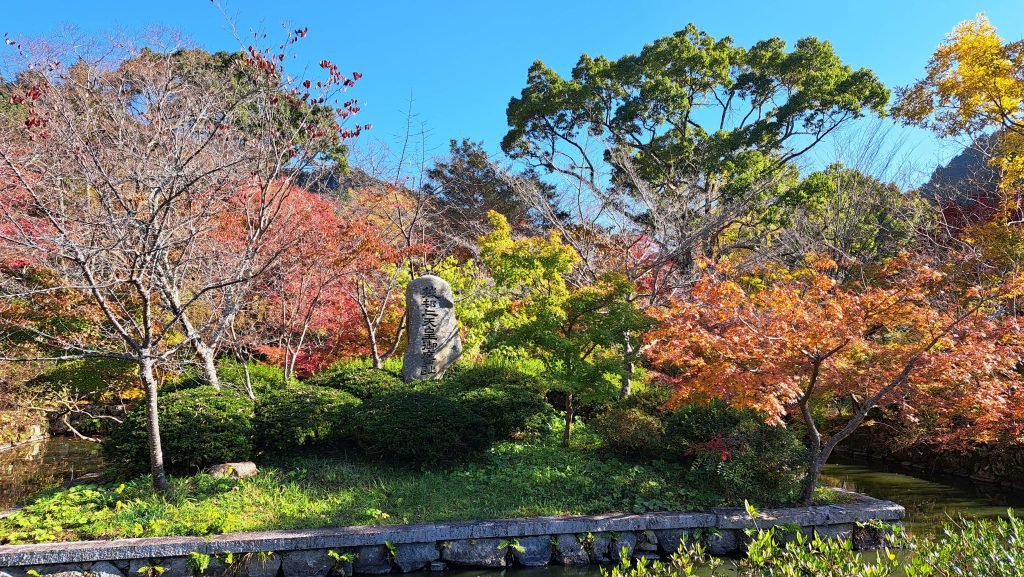
Part way up the main steps, another path branches off to the left and brings you to the Reihokan. This is a small museum of sorts that houses some fascinating statues and cultural properties, some of which date back all the way to the Heian Period from the 8th to the 12th century. Next to the Reihokan is a large wooden hall called the Onshi-Kodo. This building, also a registered cultural property, is used for the occasional lecture or function and was actually gifted to the temple by Emperor Showa.
Back on the main steps and slightly further up, yet another path leads off to the right. It passes a small hall called the Chinjyudo, another cultural property that houses the guardian spirit of Kanshin-ji. Surrounded by maple trees, it is a stunning sight during November. In fact, Fall is one of the best times to visit the temple as it (and the other nearby temples of Enmei-ji and Jizo-ji) are some of the best places in southern Osaka for autumn leaf viewing and, as they are something of local secrets, they don’t experience the hordes of tourists that more famous places receive.
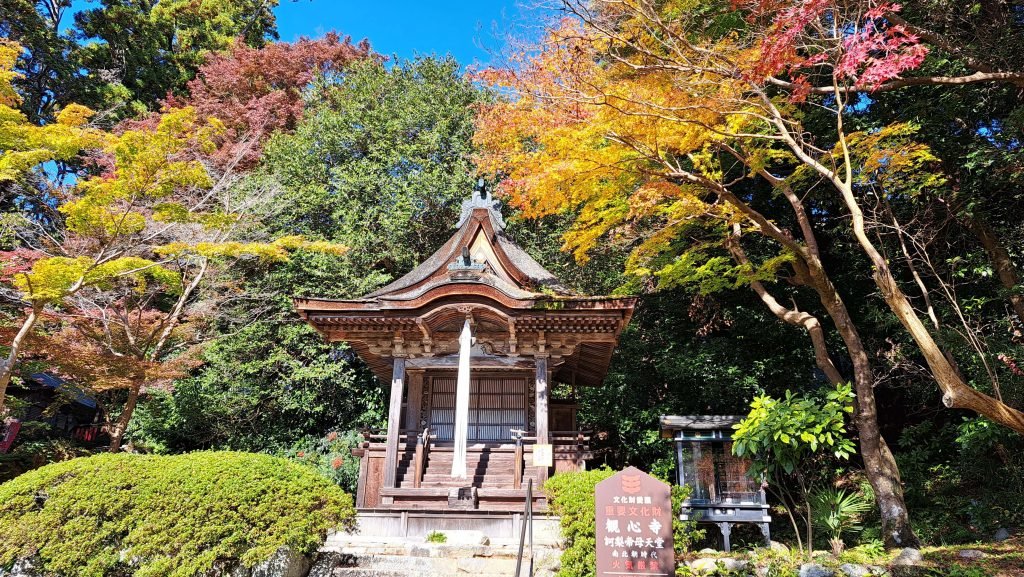
Finally, at the top of the stairs is the main hall. This large vermillion and white building is a mixture of Japanese, Chinese and Indian architectural styles and is registered as a National Treasure. It is also the oldest building with a National Treasure designation in Osaka Prefecture.
The main icon of worship at Kanshin-ji is the Nyoirin Kanzeon Bosatsu, a statue of Kannon, the Buddhist Goddess of Mercy, with 6 arms and holding a mysterious orb. Also dating back to the Heian Period, this statue is also a National Treasure and considered one of the best examples of esoteric art from the period. It is only shown to the public for two days per year on the 17th and 18th of April.
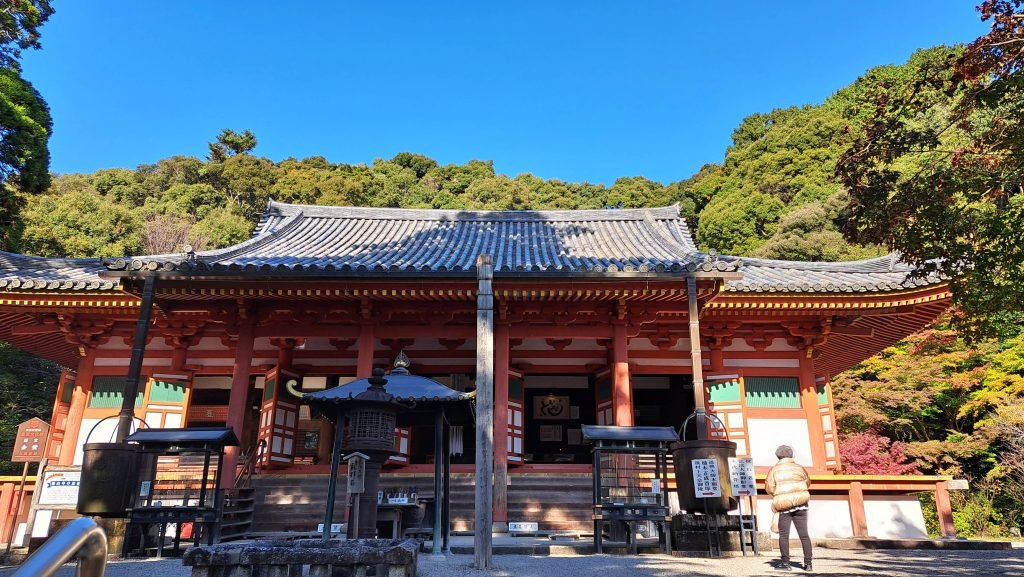
Not far from the main hall is a small bell tower as well as the Tatekake-no-to, the squat, unfinished pagoda with its wide thatched roof. Beyond the pagoda, the courtyard raises up slightly and extends under the shade of large, old trees. Off to one side, more steps run up passed a statue of Kukai and the path winds around a small hall dedicated to him, and another to En-no-Gyoja.
The flagstones that make up this path are all numbered. Each corresponds to temples along the Henro, the famous Shikoku pilgrimage. Another 33 stones correspond to the Saigoku Kannon pilgrimage. Underneath each stone is a patch of earth taken from the respective temple, allowing you to effectively complete both pilgrimages right here.
Close to this pair of mini-pilgrimages, a wider set of stone steps disappears up into the forest above the temple. At the top, a squat structure surrounded by raked sand almost blends in with the surrounding trees. This is the officially recognized tomb of Go-Murakami-Tenno, The 97th Emperor of Japan who ruled from 1339 to 1368 and who’s palace remains you pass as you enter the temple grounds.
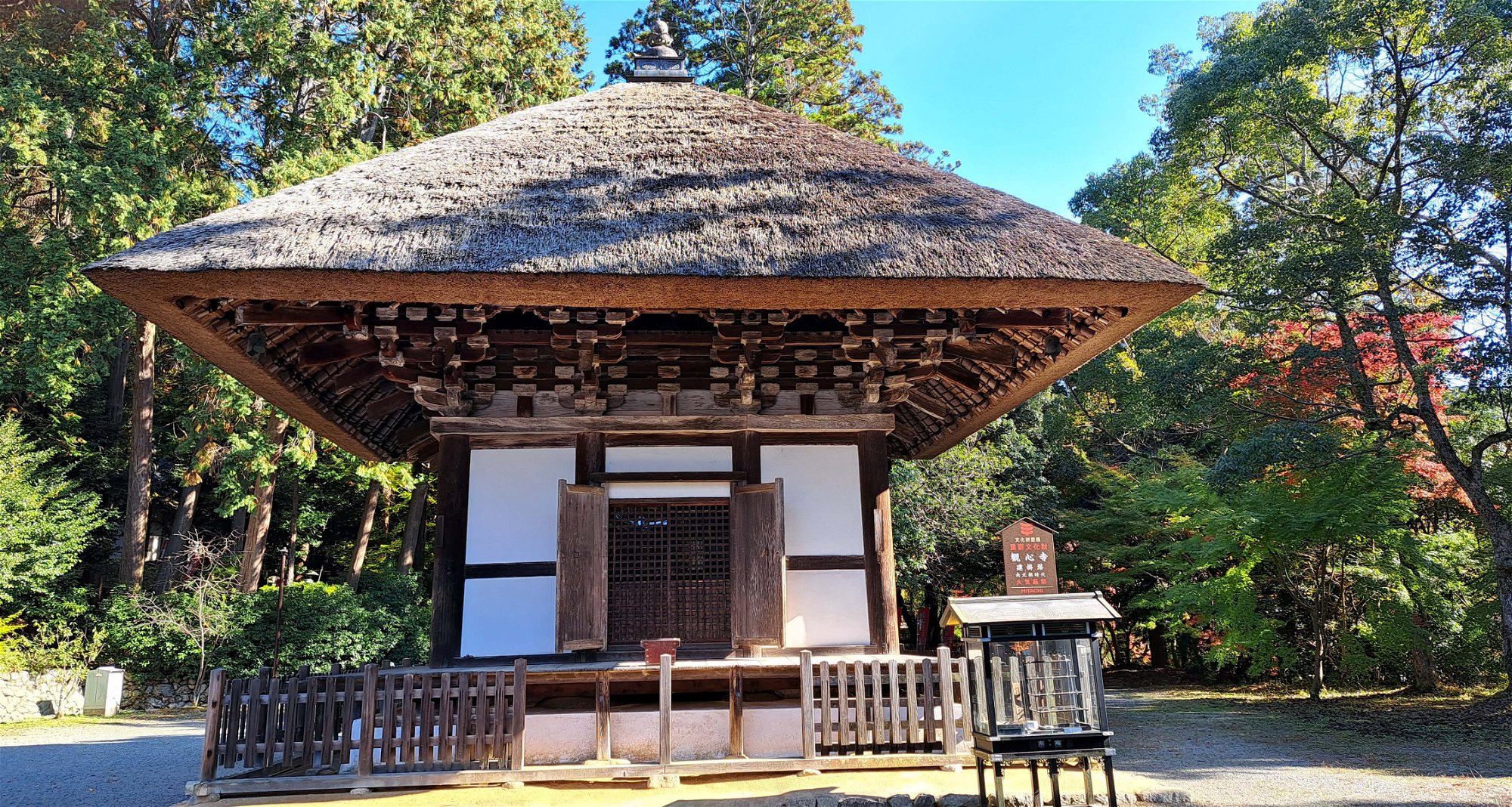
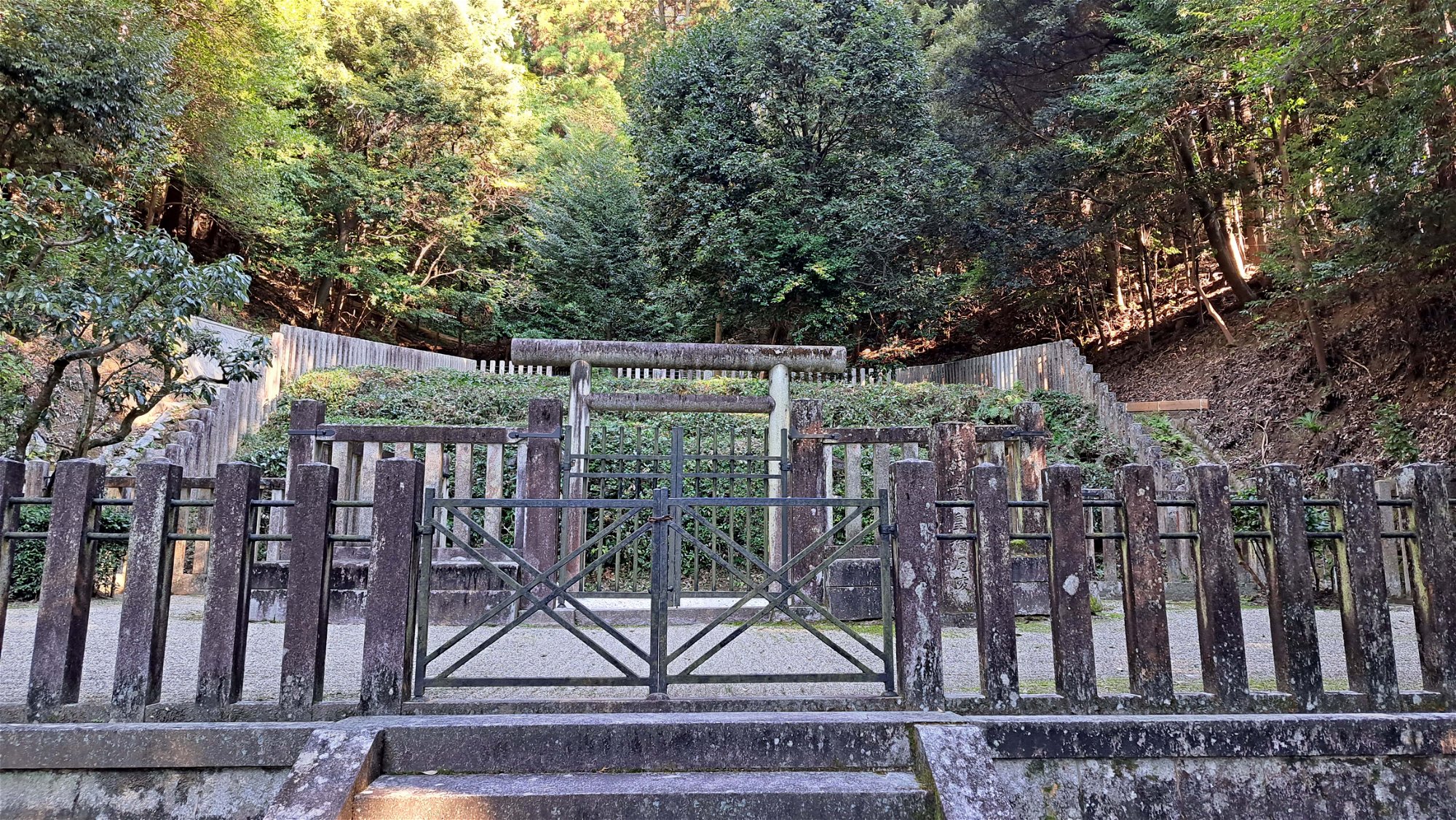

Heading back down the steps and passed a couple of small halls brings you to a far corner of Kanshin-ji, close to the temple cemetery. A prominent stone monument sits on the hillside slightly above with a small shrine in front of it. This is a special kind of grave called a Kubi-zuka and contains the head of Kusunoki Masashige.
In 1336, on the order of Emperor Go-Daigo, Kusunoki charged into battle one final time at Minatogawa in the modern city of Kobe. He knew that his small force stood no chance of surviving the direct frontal assault he was leading, and had even suggested alternative strategies to the Emperor. However, Kusunoki could not go against his Emperor’s order and thus dutifully charged to his death. After he was killed, his head was carefully removed and transported back to Kanshin-ji and buried with honour which shows how highly regarded he was, even by his enemies.
One final point of interest at Kanshin-ji is KU-RI. This is a small restaurant joined to the temple and specializes in Shojin-Ryori, special Buddhist vegan cuisine. It takes its name from the kuri, the type of kitchen found in temples, and the buildings that make up the restaurant are around 400 years old. They do not accept walk-in guests and It is quite difficult to make reservations as they only serve 20 meals a day and reservations can only be made 2 months in advance and they are only open on Monday to Wednesday. They also do not accept credit cards.
Kanshin-ji can be reached relatively easily by taking the Nankai Koya Line from Namba Station to Kawachinagano Station. From Kawachinagano Station, you should take any bus from stand number 3 and then get off at the Kanshin-ji bus stop. The temple is about a 200m walk up the road from the bus stop.
Eifuku-ji
Eifuku-ji is a large but little known temple in the town of Taishi-cho on the eastern side of Osaka Prefecture. Despite its relatively low profile, this is possibly one of the most significant temples in the spiritual history of Japan. The reason for this is because it houses the mausoleum of Shotoku Taishi, a 6th century Imperial Regent without whom Buddhism may never have been allowed to flourish. He was an extremely pious man devout to both Shinto and Buddhism.
Soon after arriving in Japan, Buddhism faced stiff opposition from Shinto purists, most notably the powerful Mononobe Clan. Prince Shotoku sided with the pro-Buddhism Soga Clan and after suffering a string of defeats, the two sides faced off at the Battle of Shigisan.
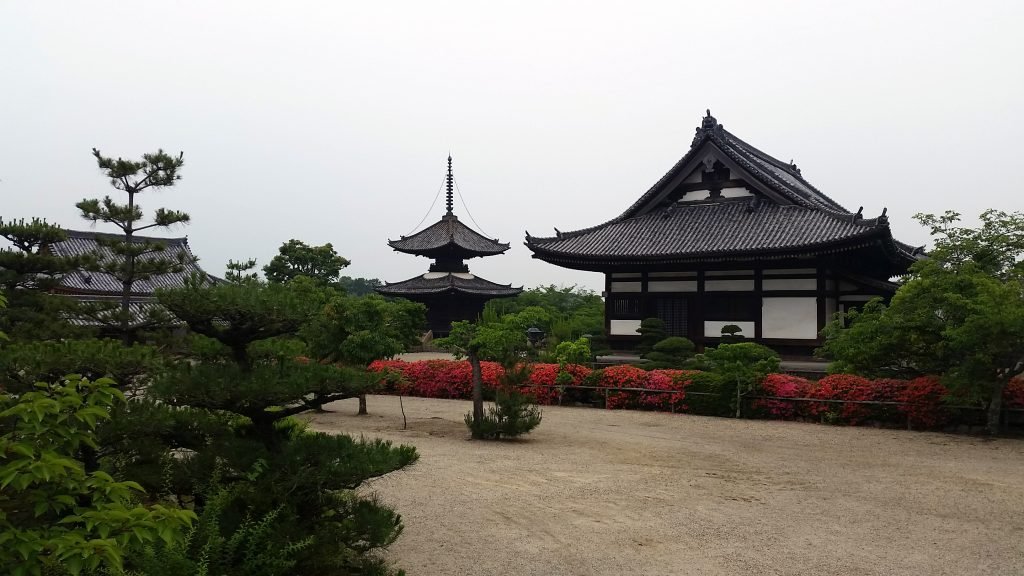
After offering a prayer to the Shitenno (Four Heavenly Kings) and witnessing a sign from Bishamonten, God of War, the young prince led his side to an overwhelming victory culminating in the near destruction of the Mononobe Clan and cementing Buddhism’s place in the spiritual landscape of Japan. Prince Shotoku subsequently founded Shitenno-ji temple, the oldest officially registered temple in Japan.
Eifuku-ji came into being because it was in this location that Prince Shotoku had decided that he would like to be buried when he died. At this time in history, the Imperial family was ruling Japan from this region and a number of Emperors and Empresses are buried nearby, including Prince Shotoku’s own father, Emperor Yomei.
This sizable temple sits at the base of a small mountain called Mount Shinaga. The whole precinct contains a dozen or so buildings including a large Kondo (Golden Hall) and a two-tier pagoda known as the Many Jeweled Pagoda.
The Nandaimon, or Great South Gate, acts as the main entrance to the temple grounds. Standing underneath it gives a clear view all the way across the courtyard to a set of stone steps. Above the steps is a smaller gate through which you will find the mausoleum of Shotoku Taishi, in the shadow of Mount Shinaga.
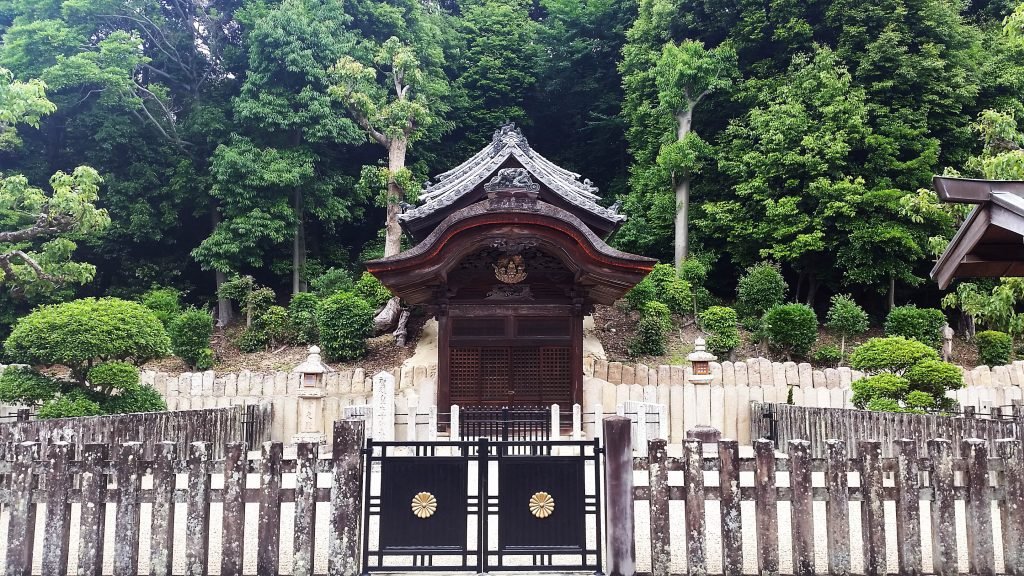
The mausoleum itself comprises of a wooden, shrine-like structure that sits in front of a stone lined burial chamber cut into the hillside. Alongside Prince Shotoku, it is said that two other people were interred within the burial chamber, his wife Tojiko-no-Iratsume, who had died just 2 days before him and his mother, Princess Anahobe-no-Hashihito, who had also died 2 months before.
It is said that at the funeral of his mother, Prince Shotoku planted a piece of wood into the ground near the entrance to the tomb which grew into a large tree and representing how Buddhism was implanted into Japan where it flourished.
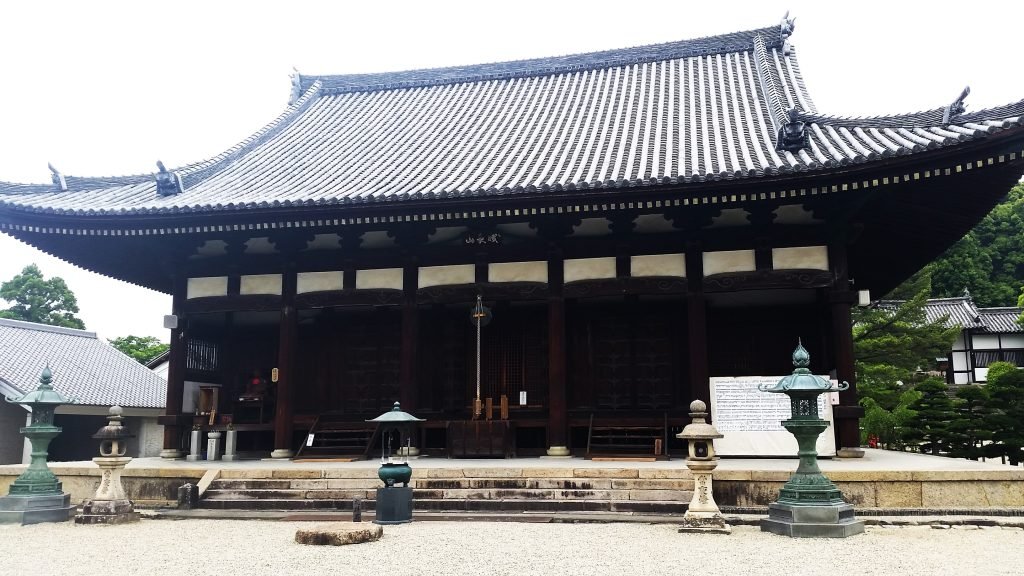
Several of the smaller halls around the grounds contain statues of Prince Shotoku at various stages throughout his life. A further two halls contain statues of other extremely important monks. The Kobo Daishido holds a statue of Kukai, founder of the Shingon school of Buddhism who established his monastery at Koyasan in Wakayama Prefecture, while the Kenshin Daishido holds a statue of Shinran, founder of the Shinshu school of Buddhism.
Every April, to coincide with the anniversary of Prince Shotoku’s death, Eifuku-ji holds the Taishi Shotoe Festival of Lights. This is a beautiful event where thousands of candles are laid out throughout the temple grounds and neighboring park.
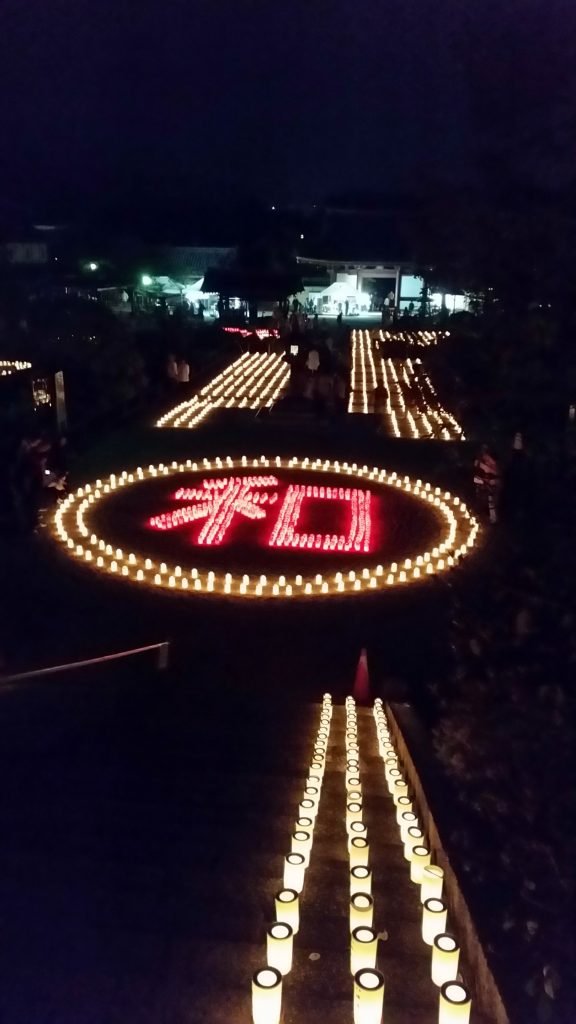
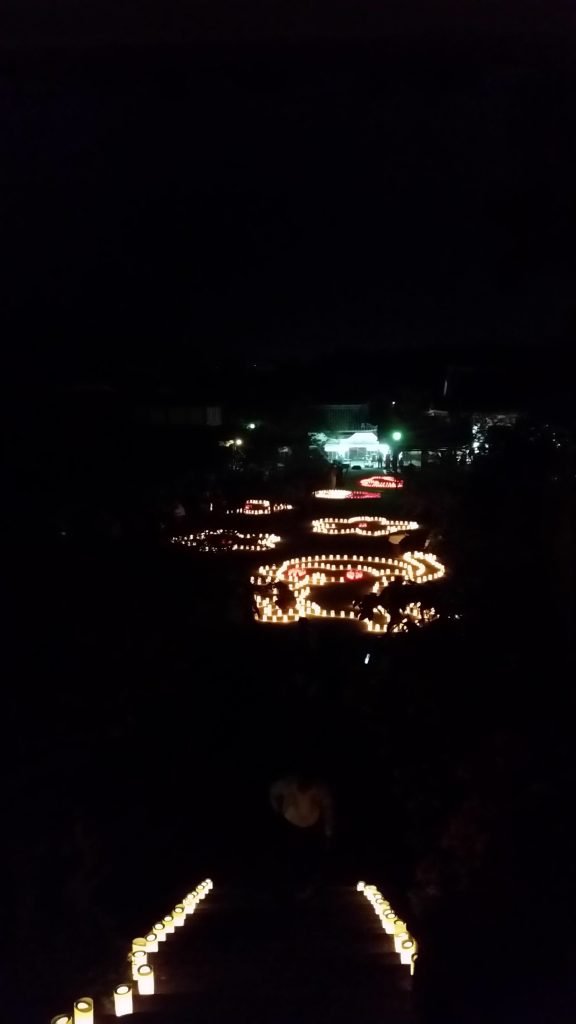
The candles are arranged in numerous patterns and shapes as well as a huge version of the Kanji 和 (wa) meaning harmony as well as the name used for Japan at the time of Prince Shotoku’s life. Candles are mostly funded by donations so visitors to the festival will often have fun trying to find the candle bearing their name among the thousands.
For history lovers with a little more time to explore, within the area surrounding Eifuku-ji you can also find the graves of Emperors Bidatsu, Yomei and Kotoku as well as that of Empress Suiko to whom Prince Shotoku acted as regent. A smaller (and much harder to find) grave is dedicated to Ono-no-Imoko. He was the diplomat who delivered Prince Shotoku’s famous letter in which Japan was referred to for the first time as “The Land where the Sun Rises”
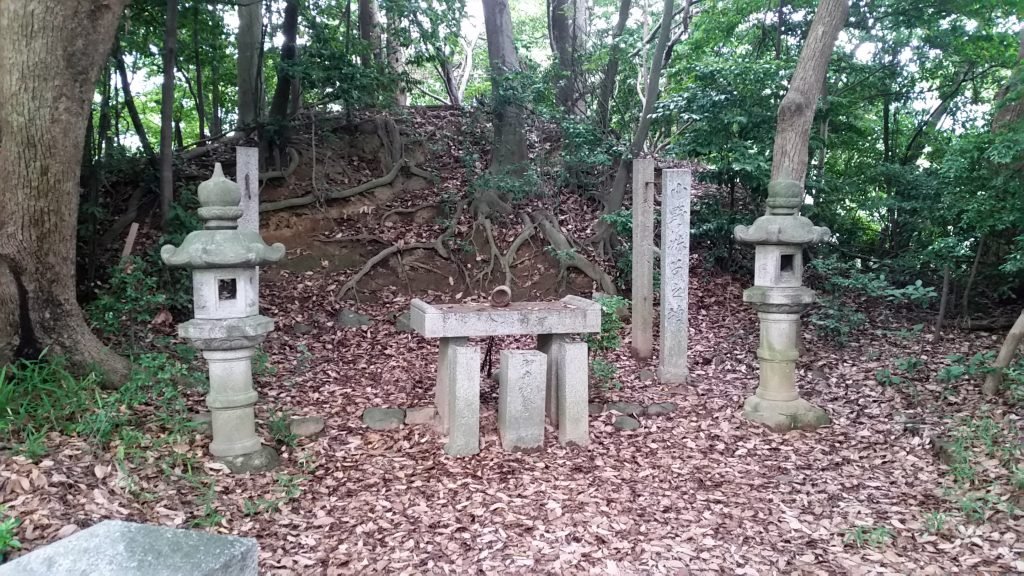
To reach Eifuku-ji, one needs to take the Kintetsu Minami-Osaka Line from Osaka-Abenobashi Station to Kaminotaishi Station and then walk south for about 30 minutes.
Shipporyu-ji
Hidden in the hills in the far south of Izumisano, Shipporyu-ji is one the most unique temples in the whole of Osaka prefecture. In fact, this ancient temple feels like it is as much a Shinto shrine as it is a Buddhist temple.
It is a prime example of Shimbūtsu shūgō/, the syncretic relationship between Shinto and Buddhism where one could experience both religions together. This practice was outlawed during the Meiji Restoration of the 19th century but the isolated nature of Shipporyu-ji allowed it to continue on relatively unscathed.
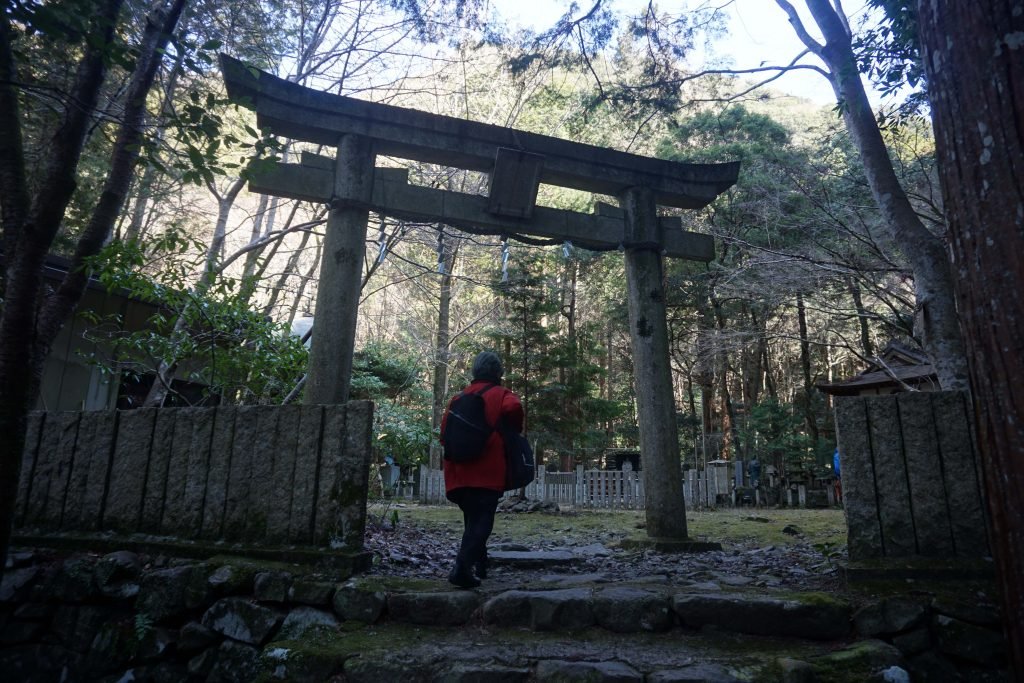
The temple itself is set within one of the last remaining primordial forests in Osaka Prefecture with the temple approach being more akin to a hiking trail than the neatly paved pathways one would normally expect. The trail runs more or less parallel to a small river and the rocky hillsides and cliff faces that enclose it are dotted with the occasional small shrine.
Part way up the trail is a large stone torii, an important symbol of Shinto shrines, marks the entrance to a small, gloomy courtyard. On the opposite side of the courtyard is a statue of En-no-Gyoja, founder of the Shugendo ascetic mountain religion to which this temple is closely associated. In front of the statue is a scorch mark, a sign that this spot is regularly used to perform Goma-gyo ritual bonfires, much like the ones that take place at Tenporin-ji on Mount Kongo.
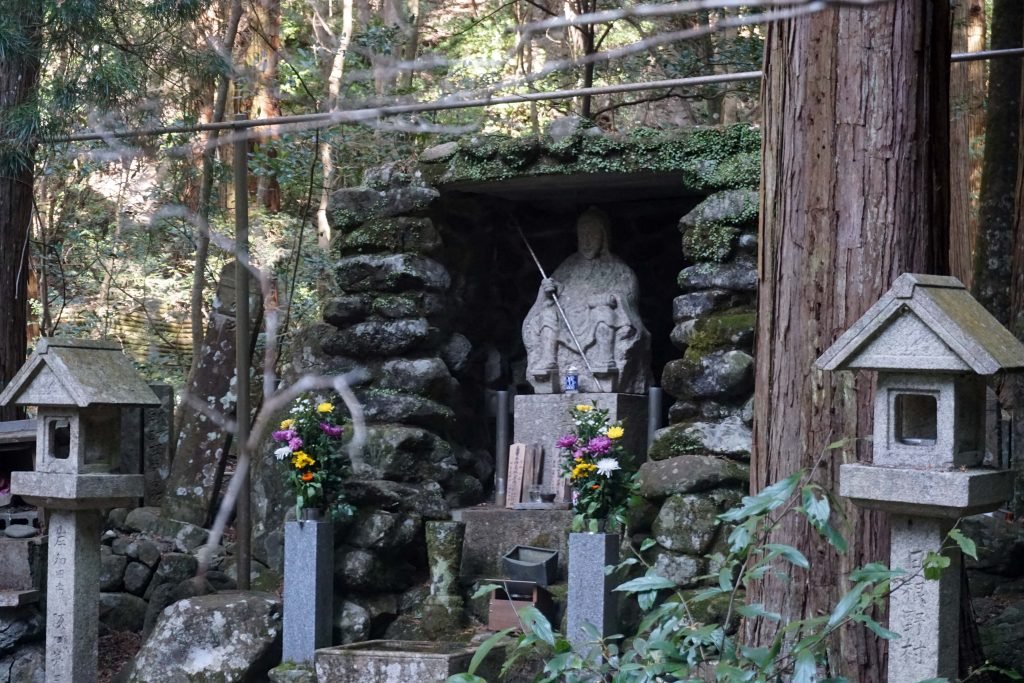
Further up the trail, temple buildings start to appear as well as another large courtyard. This time, the courtyard is dominated by a large statue of O-Fudo-Myo-o-sama, one of the principle deities of Shugendo and a protector of the Yamabushi mountain ascetics who practice it. The path continues passed the courtyard and another smaller one which contains a jet black statue of O-Fudo-Myo-o before eventually leading up to the main hall and temple store.
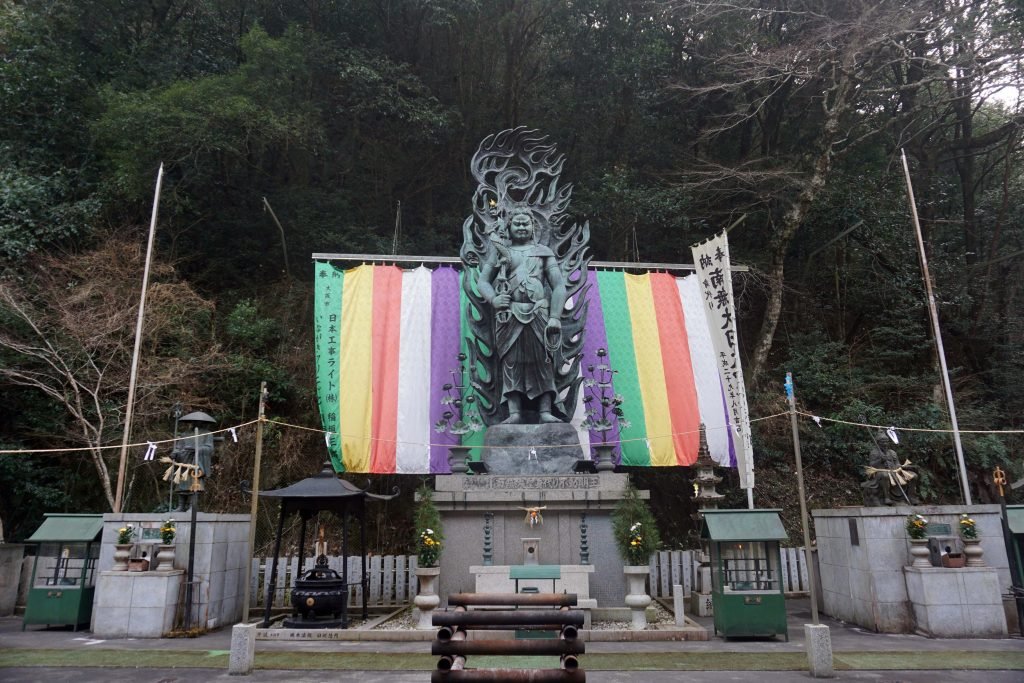
An exit at the back of the main hall brings you out to another short path running parallel to the rocky river. It ends at a small, vermilion bridge that sits in front of a cliff face down which rages a small but powerful waterfall. A shimenawa rice straw rope hangs across the waterfall to mark it out as a sacred place and ropes and chains are visible through the torrent of water. To the side of the bridge is another statue of En-no-Gyoja, this time with a small gap at the bottom. Visitors are encouraged to go behind the statue and crawl through the gap in order to represent rebirth.
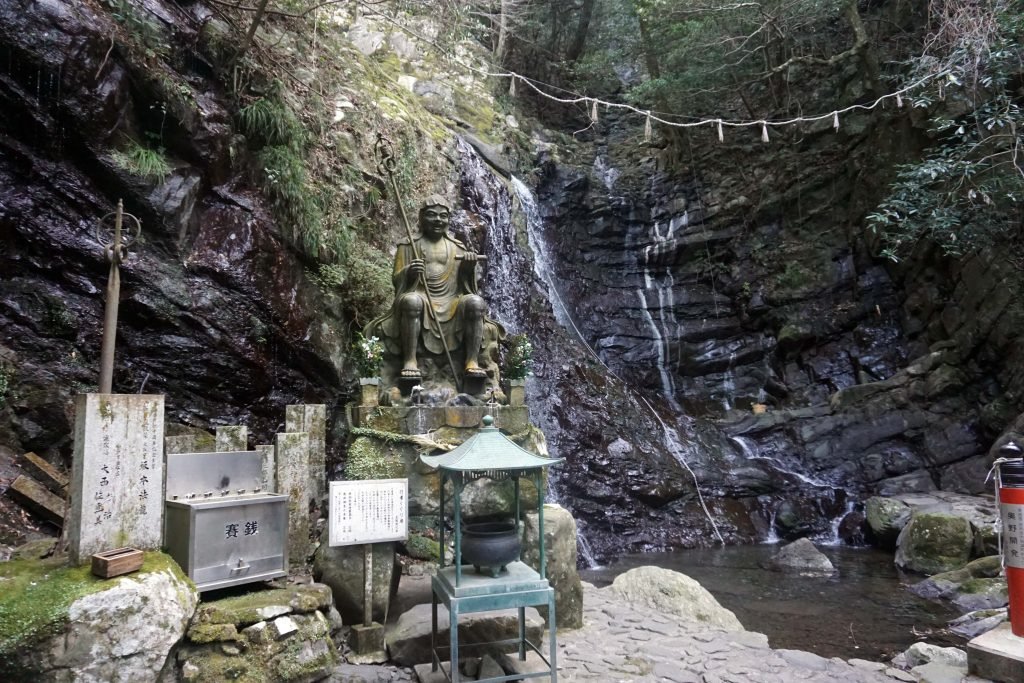
This small but powerful place is an extremely important Shugendo training area. Yamabushi practitioners will take part in Taki-gyo, or waterfall meditation, where they will stand under the bitterly cold water and recite mantras. At other times, they will climb the chains up through the waterfall to access a special pilgrimage in the forest above.
Like Kanshin-ji, Shipporyu-ji is also said to have been founded by En-no-Gyoja in the year 661. It is also known by its honorific title of Inunaki-san. According to the lore, it received this title from Emperor Uda who ruled Japan during the late 9th and early 10th century. He bestowed the name after hearing a story of a loyal dog that sacrificed its own life in order to protect its master from a huge serpent that lived on the mountain.
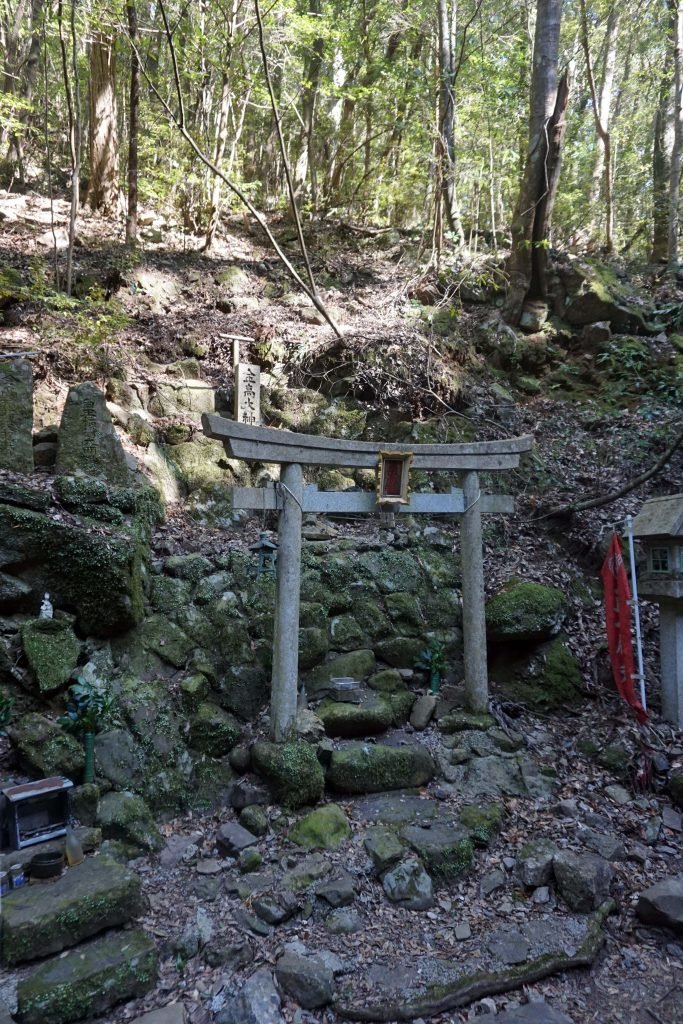
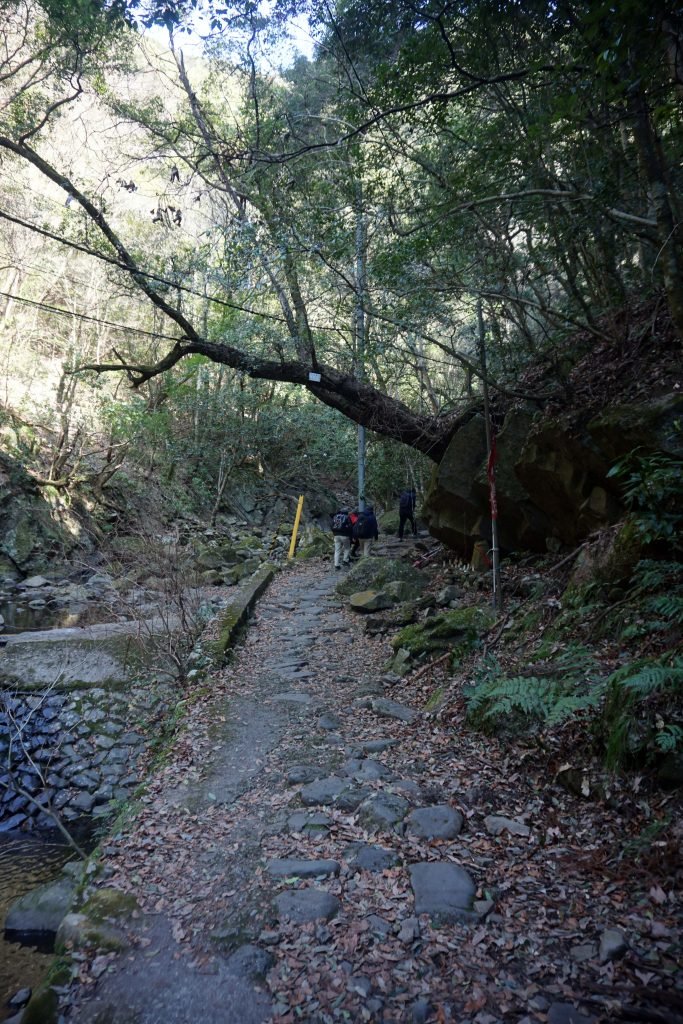
The temple is also referred to as a Nyonin Omine-san on account of it allowing female Yamabushi who are unable to receive training on Omine-san in Nara Prefecture as women are forbidden to climb that mountain.
Shipporyu-ji isn’t the easiest of temples to reach. You need to take the Nankai Main Line from Namba Station and get off at Izumisano Station. From there you need to take a bus bound for Inunakisan, taking roughly 30 minutes followed by a 30 minute walk to reach the temple.



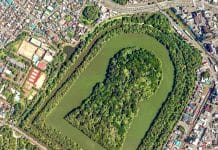


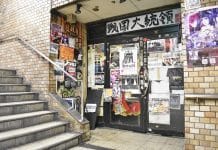


















Interesting article Gary.